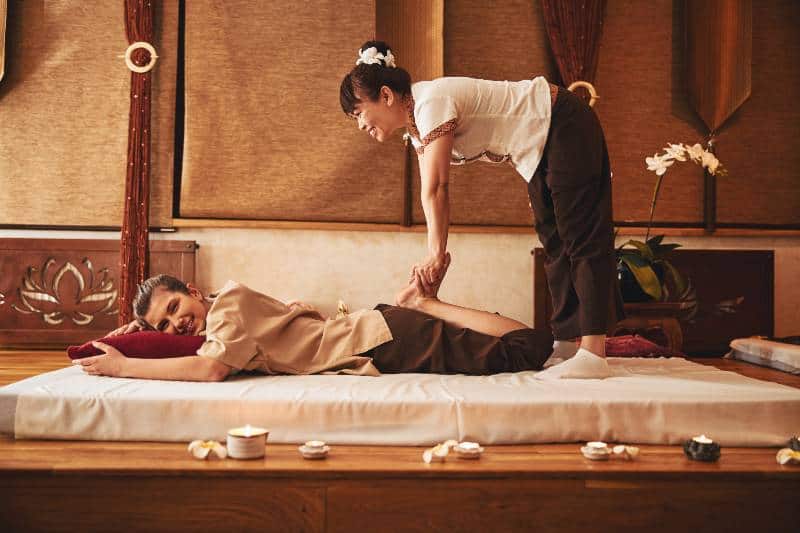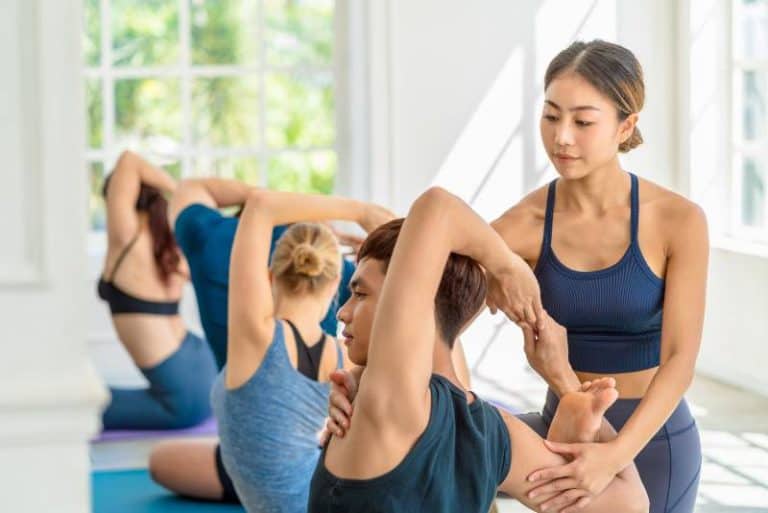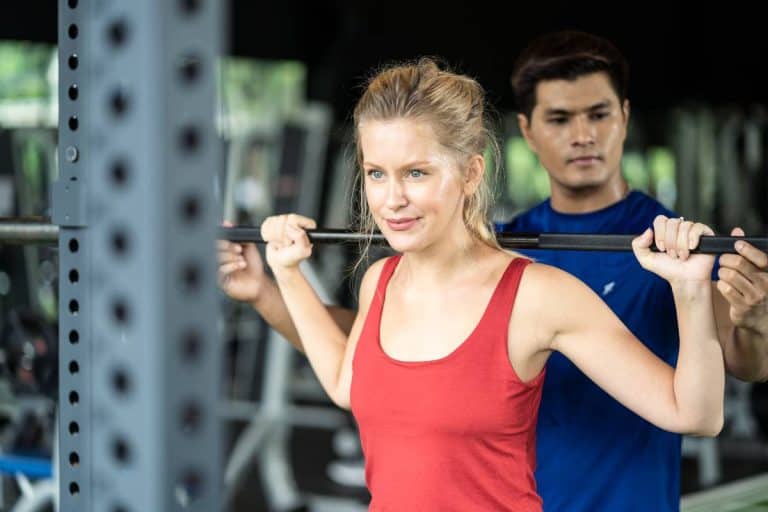How Traditional Thai Massage Can Revitalize Your Life
Are you looking for an ancient healing art that promises a world of relaxation and relief? Look no further than traditional Thai massage. This centuries-old practice, deeply rooted in Eastern culture and philosophy reinvigorates the body while calming the mind. As an alternative to modern Western therapies like Swedish massage, Thai massage offers tailored stretches combined with kneading techniques based on your body type and specific needs — all done on a floor mat rather than a table. Join us today as we explore this unique approach to holistic health care that has been used by generations of practitioners throughout Southeast Asia!
Thai Massage, an integral part of Traditional Thai medicine, is a time-honored healing technique predating modern medicine. This therapeutic practice combines deep massage and stretching on a firm mattress or mat, performed on the floor. Through its rejuvenating effects, Thai Massage promotes relaxation and enhances healthy blood circulation.
Key Takeaways
- Traditional Thai massage offers a holistic experience, harmonizing the body, mind, and spirit, and is deeply rooted in Thai culture and spirituality.
- Beyond relaxation, Thai massage provides numerous benefits including improved flexibility, reduced muscle tension, enhanced energy levels, and mental clarity.
- To fully experience the benefits and the true essence of Thai massage, it is crucial to seek out authentic practitioners and settings, preferably in Thailand.

Understanding Thai Massage
Thai massage, an ancient health practice initially practiced more than 2,500 years ago in India, has significantly grown in popularity over the years across the globe due to its distinctive characteristics compared to other types of massage. Let’s delve deeper into understanding what Thai massage is.
Definition and Characteristics
Thai massage is essentially a healing practice that combines acupressure, Ayurvedic principles, and various yoga postures. Fundamentally, it is more energetic and dynamic than other forms of massage, as it uses stretching and joint mobility exercises.
Unlike most other types, Thai massage doesn’t merely involve kneading on the muscles. Instead, the massage therapist utilizes his or her’s whole body in the process of the massage, strategically employing their hands, feet, knees, and legs to apply pressure on the client’s body. As a client, you are usually asked to lay on s floor mat or a firmly padded surface, fully clothed. The healing session may span somewhere between 60-120 minutes, depending on your preference.
Differences between Thai Massage and Other Massage Types
While traditional massages mainly focus on relaxation, Thai massage takes a more holistic approach. It offers a broad array of benefits beyond mere relaxation, including improving circulation, relieving muscle tension, increasing flexibility, and bringing about a balanced energy flow in the body.
Unlike Swedish and Deep Tissue massages, which require you to disrobe and be basically inactive on the massage table, Thai massage takes place with you fully clothed and involves movement across different yoga-like positions. This interactive nature promotes more bodily movement, thus more impactful on flexibility and functionality.
The Spiritual Aspect of Thai Massage
The spiritual aspect of Thai massaging is another unique feature that sets it apart. Rooted deeply in Buddhism, Thai massage places a great deal of emphasis on the body’s energy lines, also known as ‘Sen.’ Thai massage practitioners focuses on freeing and maintaining the flow of energy throughout your body, aligning it more with holistic spiritual healing rather than just a physical one.
In Thai philosophy, it is believed that blocked energy can lead to illness and disease. Conversely, unhindered energy flow is linked to health and wellness. Therefore, through Thai massage, the therapist aims to unblock any trapped energy, reinstating the balance and harmony within the body.
Thai Massage offers a unique blend of physical, emotional, and spiritual healing that brings about overall well-being, vastly differing the experience from both the process and the outcomes of a typical Western-style massage. Therefore, understanding its distinctive characteristics is crucial to fully embrace and maximize the benefits it offers.
The Experience of Thai Massage
Thai massage is a truly unique and enriching experience, primarily due to its distinctive nature. From the massage process to the ambiance of the setting and the personal reflections that you may witness during the session, your time spent receiving Thai massage is bound to create a lasting impression.
Description of the Massage Process
The Thai massage process involves a series of choreographed actions by the therapist that can be viewed as both an art form and a therapy. As you, the recipient, remain fully clothed on the floor mat, the therapist will work on different areas of your body through slow, rhythmic compressions and stretching.
The therapist relies on their hands, fingers, elbows, legs, and even feet to apply pressure to your body’s energy lines. You might find yourself in various yoga-like positions as the therapist uses their body weight or body parts to manipulate your muscles, joints, and soft tissues. Assisted stretching techniques are also employed to increase flexibility and to help dissolve any tension present.
The Ambiance and Setting
The setup and environment for a traditional Thai massage are just as crucial to the overall experience as the techniques. The massage is typically conducted in a spacious room or an outdoor space to accommodate both the therapist’s and your movements. Soft, soothing music often plays in the background to enhance the atmosphere of tranquility and relaxation.
Dim lighting and pleasant scents from essential oils or incense further complement the serene setting, promoting a sense of calmness and ease. Overall, the ambiance helps create inner peace, allowing you to focus on being present and fully immersing yourself in the unique experience.
Personal Reflections and Feelings during the Massage
During a Thai massage session, you may experience various emotions and sensations as you engage with the therapist and your body. As the therapist works through the energy lines, you might feel tension or pressure points that you didn’t even realize existed. The assisted stretching might lead to sensations of both release and relaxation in your muscles and joints.
The combination of acupressure and stretching enables you to explore your body’s limits while also encouraging you to let go of any stored tension. It can become a meditative experience, allowing you to tap into self-awareness and inner harmony. Many people find themselves feeling more connected to and appreciative of their bodies after a Thai massage.
The experience of Thai massage encompasses not only the sequence of choreographed techniques but also the calming atmosphere and personal emotions and sensations that arise during the process. To truly appreciate its uniqueness, one needs to embrace it both physically and mentally, allowing the process to bestow its many health and well-being benefits.
Benefits of Thai Massage
Thai massage, with its unique blend of acupressure, assisted yoga postures, and Ayurvedic principles, carries numerous benefits that impact the body, mind, and spirit in myriad ways. Let’s delve deeper into understanding the holistic benefits this therapeutic modality has to offer.
Physical Benefits
- Improved Circulation: Thai massage works the body with a series of stretches and pressure point stimulation, which boosts circulation, ensuring that more oxygen gets to your body’s cells.
- Enhanced Flexibility: Assisted yoga-like postures involved in Thai massage help improve overall body flexibility and range of motion. This benefit is particularly helpful for individuals with stiff joints or tight muscles.
- Pain Relief: The technique often targets specific areas of discomfort and tension in the body, such as the back, neck, and shoulders, leading to relief from chronic and acute pain.
- Boosted Energy Levels: By stimulating the energy lines known as ‘Sen,’ Thai massage revitalizes the body’s energy pathways, which can leave you feeling rejuvenated and energetic.
Mental and Emotional Benefits
- Stress Reduction: Thai massage helps decrease the body’s production of stress hormones and promotes the release of endorphins, the body’s natural ‘feel good’ chemicals. This process aids in stress reduction, boosting overall mental wellness.
- Improved Mind-Body Connection: The holistic nature of Thai massage can improve the mind-body connection, allowing for increased self-awareness, inner peace, and balanced emotions.
- Relief from Anxiety and Depression: The calming and Motion Thai massage can lead to reduced anxiety, relieve depressive symptoms, and promote a sense of calm and well-being.
Long-term Effects
- Consistent Pain Relief: Regular Thai massages can work to keep chronic pain at bay, offering long-lasting alleviation from conditions like arthritis, back pain, or migraines.
- Sustained Stress Management: Over time, Thai massage can contribute towards better stress management, allowing individuals to handle stressors more effectively.
- Enhanced Immune System: By boosting circulation and relieving stress, consistent Thai massage sessions contribute to a stronger immune system, leading to overall better health.
- Increased Joint and Muscle Health: Regular stretching and mobilization of joints during massage sessions lead to healthier, more flexible joints and muscles and promote better posture over time.
In essence, Thai massage offers substantial and lasting physical, mental, and emotional benefits. By integrating this practice into a regular self-care regimen, one can considerably enhance their overall wellness.
Finding Authentic Thai Massage
Receiving an authentic Thai massage could be a rewarding and rejuvenating experience. However, it’s vital to find a legitimate and professional place to truly experience the healing it offers. To help you navigate your way to authentic Thai massage experiences, here are some tips for identifying genuine centers, recommended places in Thailand, and the cost of traditional Thai massage.
Tips for Identifying Genuine Thai Massage Places
- Check Reviews: Online reviews, particularly on platforms like TripAdvisor or Yelp, can reveal valuable insights into the experiences of other clients. Reading these reviews can enlighten you about the quality of services and overall ambiance of the massage center.
- Look for Certifications: Ensure that the center has certified therapists trained in Thai massage. Institutions like the Thai Ministry of Public Health or local Thai massage schools provide these certifications. The center should also respect industry standards and maintain a clean and professional environment.
- Inquire about their Techniques: When looking for a genuine Thai massage experience, inquire if the center offers traditional techniques. This includes utilizing acupressure points, assisted stretching, and energy line work, which are the pillars of authentic Thai massages.
- Observe the Atmosphere: Traditional Thai massages take place on a floor mat in a spacious and calm setting. Pay attention to whether the center offers an environment that embodies serenity and comfort, promoting a genuine Thai massage experience.
Recommended Places for Thai Massage in Thailand
Thailand is the heart of Thai massage, offering various magnificent places to receive an authentic experience. Here are a few recommendations:
- Wat Pho Thai Traditional Massage School: Also known as the Temple of the Reclining Buddha, this famous temple in Bangkok houses one of the oldest and most renowned Thai massage schools. Here, you can receive Thai massage by well-trained therapists and enjoy the historic ambiance.
- Chiang Mai Old Medicine Hospital: Located in Chiang Mai, this institution is renowned for its authentic approach to Thai massage. They offer a range of traditional Thai massages, herbal massages, and even massage courses.
- Loi Kroh Massage: Also in Chiang Mai, Loi Kroh Massage offers authentic Thai massage services taught by Ajarn Sinchai, a respected teacher. The staff comprises a licensed massage therapist highly knowledgeable in the art of Thai massage.
Cost of Traditional Thai Massage
The cost of Thai massage can vary depending on the location and the type of establishment you choose. In Thailand, prices typically range from 200 to 1000 Thai Baht per hour (approximately $6 to $30 USD). Upmarket spas and hotels may charge more for their services, while local Thai massage shops offer more affordable rates. It’s important to remember that tipping your therapist is customary in Thailand, so allot an additional 10-15% of the treatment cost for gratuities.
Finding an authentic Thai massage takes a bit of diligence and research. By following the tips and recommendations mentioned above, you can ensure an unforgettable and genuinely healing traditional Thai massage experience.

Traditional Thai Massage FAQs
What is traditional Thai massage good for?
Traditional Thai massage offers a wide range of benefits for physical, mental, and emotional wellness. It is good for reducing stress, alleviating pain, improving flexibility and joint health, promoting better posture, and enhancing the mind-body connection.
What is Thai vs traditional massage?
Thai massage, also known as Thai yoga massage or Nuad Bo Rarn, is an ancient form of bodywork that combines acupressure techniques with assisted stretching and energy line work. Traditional massage refers to various forms of massage practices originating in different cultures and may not necessarily include these specific elements.
Do you wear clothes in traditional Thai massage?
Yes, in traditional Thai massage, you remain fully clothed as the therapist uses their hands, feet, and elbows to apply pressure and stretch the body. Loose and comfortable clothing is recommended for ease of movement during the session.
Is a traditional Thai massage full body?
Yes, traditional Thai massage typically involves the entire body from head to toe. The therapist will work on pressure points and manipulate joints and muscles to release tension and promote relaxation throughout the body.
Is Thai massage a deep massage?
Thai and Swedish massage are distinct and unique from each other in various aspects. Thai massage, also known as Thai yoga massage, originated in Thailand and incorporates acupressure and assisted yoga postures. It focuses on improving energy flow and flexibility, using rhythmic compressions and stretches.
On the other hand, Swedish massage, developed in Sweden, primarily involves long, gliding strokes along with kneading and deep circular movements. It aims to relax the body and mind, relieve muscle tension, and improve circulation.
While both types of massage offer their own set of benefits, such as reducing stress and promoting relaxation, the techniques, origins, and specific therapeutic goals differ, providing individuals with different experiences based on their preferences and needs.
Conclusion
Traditional Thai massage can be a powerful experience, opening up the body and the mind and ultimately helping to produce balance in one’s life. True authenticity and power are borne of experienced practitioners in indigenous settings such as Thailand. The rewards of traditional Thai massage are not simply relaxation; this ancient technique is also effective at promoting improved flexibility, reduced muscle tension, increased energy levels, and mental clarity. If you’re interested in exploring these benefits for yourself while gaining insight into another culture along the way, the authentic experience you seek awaits you in Thailand. Subscribe to our newsletter for the best information about living in Thailand or reach out to us with any questions that may arise. Don’t let your health—and an incredible opportunity—pass you by!






